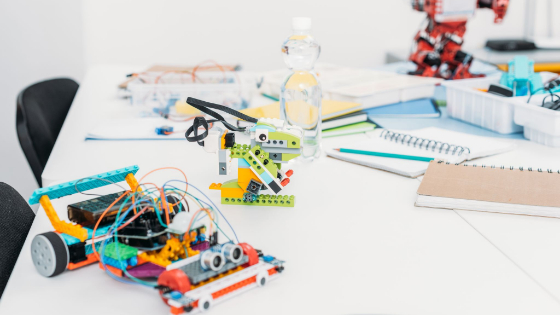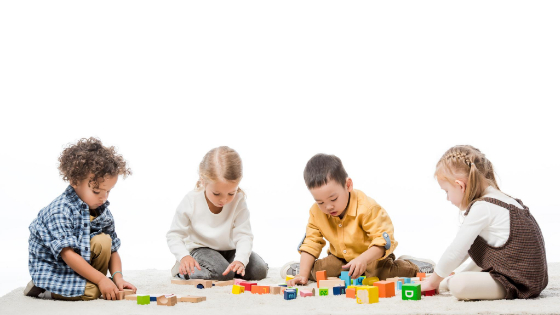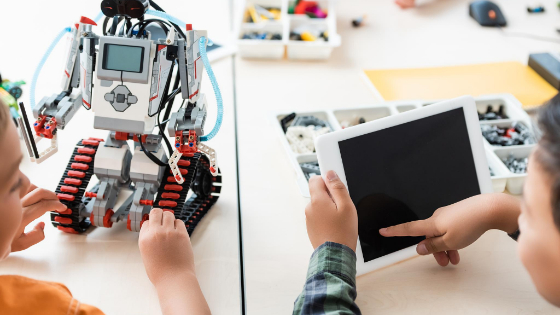STEM education is trending among preschools, but it doesn’t have to start with a lot of stress. Here’s what you should know about STEM education in preschools.
IntroductionThe world is changing fast. Science, Technology, Engineering and Mathematics (STEM) skills are becoming increasingly important for children to learn at a young age. And what better place to start than in preschool. This blog post will explore the meaning of STEM education and how you, a preschool owner, can incorporate STEM into your preschool. 
What does STEM Education Mean? What about STEAM Education?STEM is a broad term used to describe the areas of Science, Technology, Engineering, and Maths. These areas are often referred to as STEM, an acronym formed from the four starting letters in the name of the above four subjects, since it covers these four topics and brings them together into one cohesive unit. STEM Education means educating children in four subjects (Science, Technology, Engineering and Mathematics). STEM curriculum focuses on these subjects in order to prepare children to succeed in the future. However, STEM education is not a mere combination of the four subjects. It combines them in an interdisciplinary and applied approach to better equip students in today’s workplace When children begin learning about STEM, they are provided with important skills in numeracy, literacy, problem solving, critical and analytical thinking. They can then apply these skills to other things in the world. Done right, STEM Education will help children to learn in a supportive child centric environment, which allows them to develop a love of learning, an open and curious mind, and a lifelong learning attitude. 
A is for “Art”, added to STEM to get STEAM. Art can be the result of a child’s creative process that involves exploring and practicing many ideas and techniques. Children learn to doodle or draw from a very young age. As young children develop at different rates, they can use art to express their thoughts, ideas, and feelings, before developing language and vocabulary. But “Art” in STEAM is not about fine arts only. “Arts” also include language arts, physical arts, manual arts, liberal arts. Art education covers everything from drawing, drama, theatre, dance, film, creative writing, architecture and landscape design... The presence of “Art” is imperative to connect the dots between the four areas of STEM. Art is then not just another subject, besides the four STEM subjects. It overarches STEM. STEM and STEAM are now used interchangeably to mean the same thing. How Early Can STEM Education Be Introduced to Students?Young children are naturally curious about the world around them, and STEM Education is best introduced to them at a young age. Research suggests that introducing young children to STEM subjects could have a lasting impact on their interest in STEM and STEM ability. STEM education can be brought to students as young as preschool age. Separate science, technology, engineering, and maths activities can be introduced to even younger children. Children who are exposed to STEM from a young age, tend to be more open minded, agile, creative, and resourceful. This means that they are more likely to be successful in a range of different subjects and in life. |
The purpose of introducing STEM to young children is not to teach them academic knowledge in these STEM subjects, but to get them accustomed to learning new things, to form enquiries about the world around them, and develop their interest in searching for answers to their own questions. Using STEM concepts and projects in the classroom strengthens children’s understanding in core subject areas. As we look to the future of STEM education, it is important for educators and parents to focus on collaborative pathways, tailoring STEM based projects to children’s individual needs. How Should STEM Be Incorporated into Early Childhood Education?Science experiments, water, and other STEM based activities can all be introduced at the preschool level. Learning this way can be a fun and enjoyable experience for children. Because of this, more preschools are embracing STEM based activities. Here are some of the things that preschools can offer children. Block buildingPlaying with wooden blocks, sorting them into different colours and shapes, is STEM in action. Children love to build things, and with block building activity they can create their own structures. It’s a great way for them to learn about maths, physics, engineering, and more. Additionally, it encourages hand eye coordination, leading to better fine motor skills. 
Creating self written booksPreschoolers like to explore their creativity. They are interested in things around them. When they create their own books, they will love putting different things on each page. Giving your preschoolers “Science Notebooks” is a great way to help them to develop their own sense of inquiry and observation capacity. Science experimentsPreschoolers like to try new things. A simple science experiment could be to see what would happen when you put soda and vinegar together. It is important to not just focus on the fun side of the activity, but teach children to form assumptions, ask questions, and test different possibilities. Recording musicAnother great way to introduce STEM is making music. Some preschoolers love music and singing. Why not record it? You can use an app on your phone to record some music. You can record their voice, then you can mix it together with your music. Children can learn how a sound can be made, how artists put sounds together to make music. Give your preschoolers the chance of being junior musicians! Painting pictures
Painting allows children’s imaginations to run riot. Working with child sized brushes supports fine motor skills. Painting also helps develop a child’s hand eye coordination. It is a great way to teach them science. Children can paint a picture of what they are thinking about in order to understand the world better. They can also create visual aids that help with learning new information and concepts. Barriers to Better Early STEM ProgramsThere is widespread acceptance for the need for STEM education in preschools. How do you teach STEM to children who can barely read or write? |
A good foundation in maths and science is essential. However, when STEM education is presented to children without a solid foundation, it will never succeed. Let’s go over some barriers and solutions that can be implemented. Inappropriate Instructional Methodology and Lack of STEM KnowledgeOne of the main barriers to STEM education in preschools is the knowledge gap. STEM is new, and many have a limited understanding of what STEM is. Besides, our knowledge of how children learn has greatly improved over the last few decades. We now know that to succeed in learning, environments and instructional methodology have to be child centred. However, preschool teachers in developing countries such as Vietnam (Neylon, 2021), Thailand (Israsena, 2007) or India (Kaul, 2019) still use old fashioned teacher centric teaching methodology, encouraging rote learning, which does not help children learn best. What can we do? Preschool teachers who have knowledge in child development and psychology are important. Teaching assistants having an interest in, or a background in Science or Technology, would be very good for STEM in a preschool classroom. Providing preschool teachers with STEM training courses is another powerful option. See, for example, our syllabus of a STEM training course for preschool teachers looks like by clicking here. Time ConstraintIn trying to integrate STEM into classrooms, teachers have time constraints. Preschool teachers often have to work long hours. They have no time to prepare STEM lesson plans, to test different STEM materials, and to help the students engage with the materials. What can we do? A good STEM based curriculum will reduce lesson planning time, and is critical for optimising students' learning experience and learning outcomes. Lack of Equipment and MaterialsPreschool owners and teachers often think that they need to have a separate STEM Lab in their preschools to be able to implement STEM Education. That could be costly. Moreover, good STEM equipment, such as telescopes, 3D printers, and virtual reality goggles are not always accessible, or affordable in developing countries. What can we do? Instead of designing complex projects, you can start one step at a time. Show pictures, videos of abstract objects, or 3D models, which children will understand visually. Then engage the children in the creative process, encouraging them to think of STEM problems for themselves, and use recycled materials and loose parts to create their own models. Fear of FailurePreschoolers are taking their first steps in learning, levels of self confidence may not be that high. They may be worried about getting things wrong. They can be quiet and passive when you introduce a new learning model to the classroom. What can we do? Teachers, and parents, need to work collaboratively to guide children. Prompting with a clue can help children to develop their own ideas and confidence. 
ConclusionWe explained what STEM Education means and outlined how STEM education should be implemented into early childhood programs to give children a strong foundation in the early years of learning and STEM. This can be replicated through a quality STEM based curriculum. |
|
Check interesting thematic units in our STEMsmart Curriculum here Sign up to receive a sample of a thematic unit here (Vietnamese version). |
References
Israsena V. (2007), Thai Teachers' Belief About Learner-Centred Education: Implication for Success for Life Thailand. PhD Thesis, University of North Texas.
Kaul, V. (2019). Research in India on Early Childhood Education and School Readiness: Some Learnings. In: Kaul, V., Bhattacharjea, S. (eds) Early Childhood Education and School Readiness in India. Springer, Singapore.
Neylon, G. & Le, X., (2021). Early Childhood Education and Care in Vietnam: From Confucianism to 21st Century Reforms in Curriculum and Training. In International Perspectives on Early Childhood Teacher Education in the 21st Century. Springer Singapore, pp. 231-249